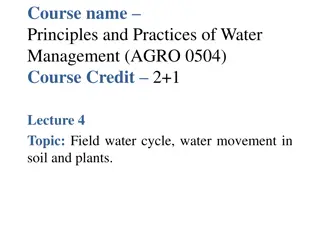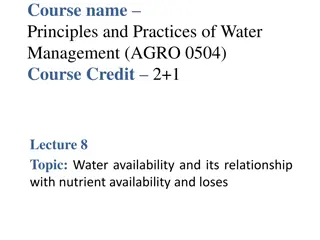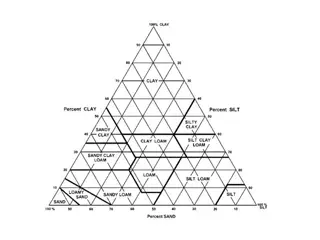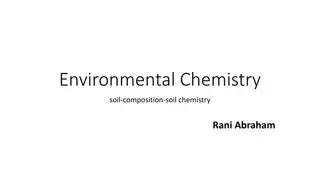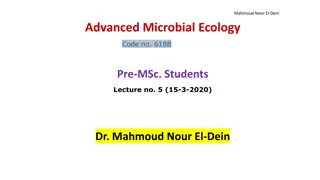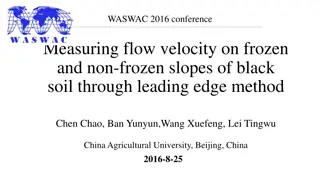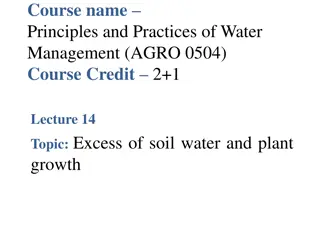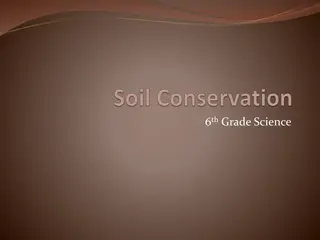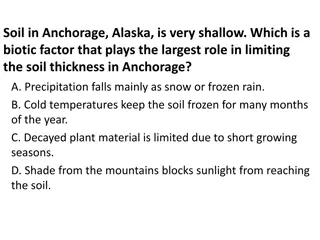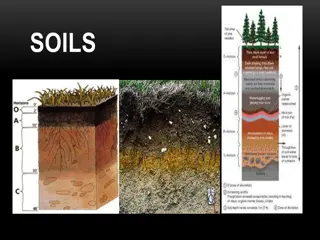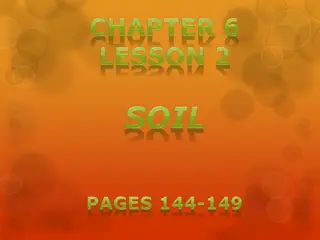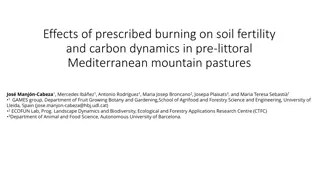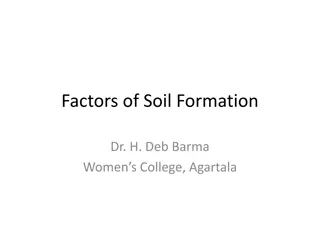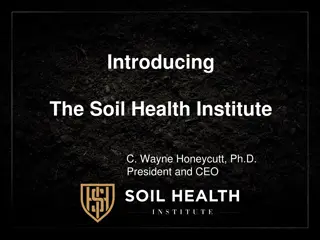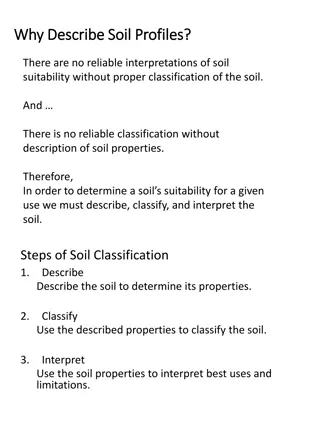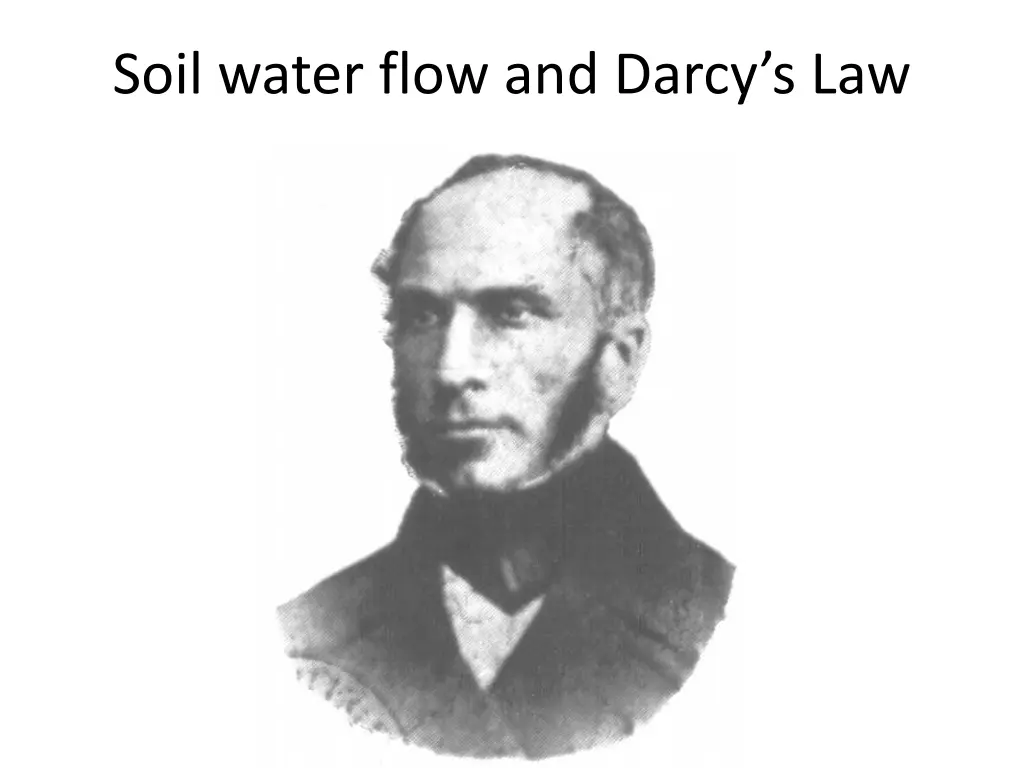
Understanding Soil Water Flow and Darcy's Law
Explore the principles of soil water flow, Darcy's Law, and hydraulic conductivity through concepts like laminar flow, hydraulic gradient, water flux, and hydraulic resistance. Discover the relationship between flux, hydraulic gradient, hydraulic conductivity, and other key factors influencing water movement in soil.
Download Presentation

Please find below an Image/Link to download the presentation.
The content on the website is provided AS IS for your information and personal use only. It may not be sold, licensed, or shared on other websites without obtaining consent from the author. If you encounter any issues during the download, it is possible that the publisher has removed the file from their server.
You are allowed to download the files provided on this website for personal or commercial use, subject to the condition that they are used lawfully. All files are the property of their respective owners.
The content on the website is provided AS IS for your information and personal use only. It may not be sold, licensed, or shared on other websites without obtaining consent from the author.
E N D
Presentation Transcript
Laminar flow in a tube Poiseuille s Law, ~1840: 4 1 p = Q r 8 2 L where: Q = volume of flow per unit time (m3s-1) r = radius of the cylindrical tube (m) p = pressure drop across the tube (Pa) L = length of the tube (m) = viscosity (Pa s)
Macroscopic flow-velocity vector the overall average of the microscopic velocities over the total volume considered the volume considered must be large relative to the scale of heterogeneity the ratio of the path length through the soil pores to the net travel distance is the tortuosity
Water flux the volume of water flowing through a unit cross- sectional area per unit time (V/At) units of m s-1, cm h-1, etc
Hydraulic gradient the drop in water potential per unit distance in the direction of flow ( H/L) a driving force for water flow units depend on how water potential is specified a) commonly water potential is in units of head (e.g. cm of water) and the hydraulic gradient is unitless
Darcys Law Henry Darcy; Dijon, France; 1856 the flux is proportional to the hydraulic gradient H = q K L q = flux H/L = hydraulic gradient K = hydraulic conductivity; a measure of the soil s ability to transmit liquid water
Reading assignment p. 137-146
Hydraulic resistance the resistance of a specified thickness of a particular soil to water flow (Rh) Rh= L/K For flow through two soil layers, Darcy s Law is H + = q R R 1 2 h h
Pore water velocity the average velocity of water flow through the soil pores water flow takes place through the liquid phase in the pores, not through the whole soil pore water velocity > water flux A V V q = = = soil v A t A t A water soil water
Factors affecting hydraulic conductivity soil texture
Factors affecting hydraulic conductivity soil texture soil water content and matric potential
Factors affecting hydraulic conductivity soil texture soil water content and matric potential soil structure electrical conductivity of the soil solution species of cations present entrapped air
Factors affecting hydraulic conductivity soil texture soil water content and matric potential soil structure electrical conductivity of the soil solution species of cations present entrapped air viscosity of the soil solution soil temperature
Reading assignment Infiltration, p.259-265

